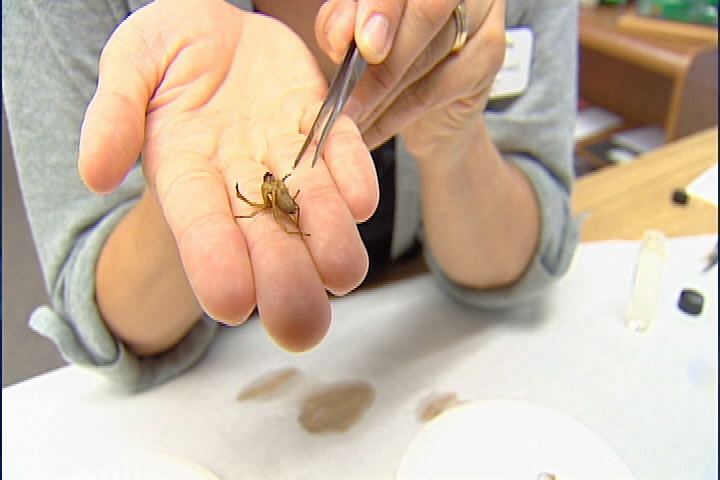CALDWELL -- Spider season is gearing up in Idaho, with late summer and early fall being when you start seeing a lot of spider webs around.
Black widows and hobos are the two most dangerous in the state, but experts tell us there are plenty of myths about both species.
Many people think they've spotted one of Idaho's most prevalent poisonous spiders, black widows and hobos, but often things are not what they appear.
For example, Ariel Agenbroad, a Horticulture Educator with the University of Idaho Canyon County Extension office says many people see spiders with what appear to be black boxing gloves, and think it's a hobo spider.
If you see that, it just means he's a boy, not necessarily that he's a hobo, Agenbroad said. [Also], a hobo, her legs are solid colored. If there were stripes on the legs, that would tell us right away that's not a hobo spider. Also if her chest had discernible spots, we could tell right away it's not a hobo.
A black widow can be identified by its glossy black body and has a red hourglass on the back.
While officials say misidentifying spiders as poisonous is common, so is thinking you've been bitten by one.
It's actually very common that people come in [to the emergency room], ER Physician Doctor David Hightower said. However, the spider bites themselves are very uncommon. Usually the bites are usually not spiders.
Hightower says it's tough to know if you've been bitten unless you see it happen. He adds often a trip to the E.R. isn't necessary and you can treat itchy bites with over the counter medications.
The times you worry about them the most is when they become increasingly red, when you have a lot of pain with the spider bite itself, or the area starts to have increased redness or streaking around it, or a small little pustule develop, Hightower said.
Hightower says other signs you should seek immediate help include shortness of breath or a black spot in the center of the suspected bite.
As for prevention, officials say it's tough to avoid arachnids altogether. They add without spiders, we'd be dealing with many more pesky insects.
The majority of spiders we encounter outside are there doing really good work, Agenbroad said. They're killing other insects. They're serving a purpose. The ones in our homes too, that's what they came in for is hunting prey. They're not hunting us.
To put the danger in perspective, spider bites are blamed for only four human deaths per year across the country, according to the U.S. Department of Health and Human Services. Further, the University of Idaho Extension office says no human deaths from spider bites have been reported in Idaho.
For additional information click here.


